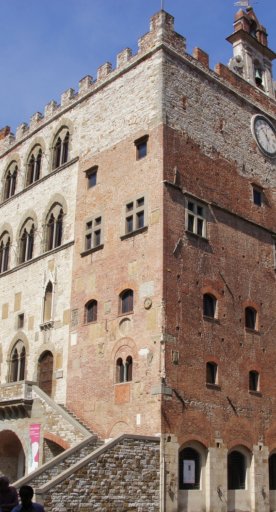Piazza Mercatale in Prato
In the heart of the city is one of the largest medieval piazzas in Europe
Piazza Mercatale in Prato was originally a large field on the Bisenzio, used since the 12th century for markets, while later it became the main location for the September fair. The walls along the river, Porta Mercatale and the bridge over the Bisenzio, together with another stretch of the defense walls to the east, border the large space, giving it unique almond shape.
Most of the buildings that once lined the piazza were modest homes and artisan workshops. In 1531, wool sheds, called tiratoi, were built in the centre of the square, which were later demolished in 1783, giving value to the New Houses, or Case Nuove, that were erected on the eastern side, a typical example of working-class housing at that time. The garden built in 1926 altered the shape of the piazza, which was seriously damaged during bombings in 1944.
Currently, the piazza is lined with late-19th-century and 20th-century buildings, and little remains of the original porticoes underneath which artisans, especially copper craftsmen, once worked. Where via del Carmine intersects with the piazza, you can find the Church of San Bartolomeo, entirely rebuilt after the war.










